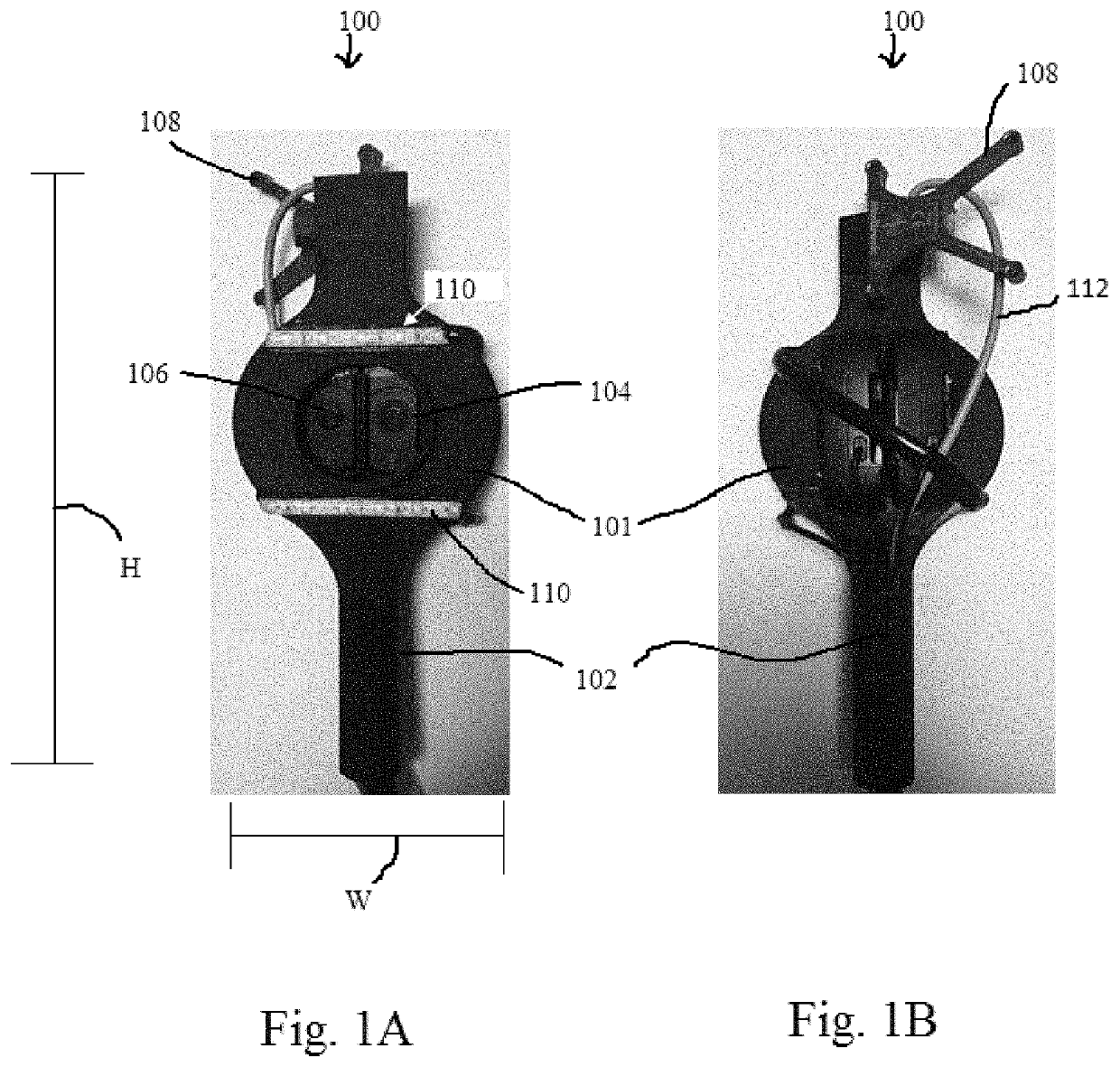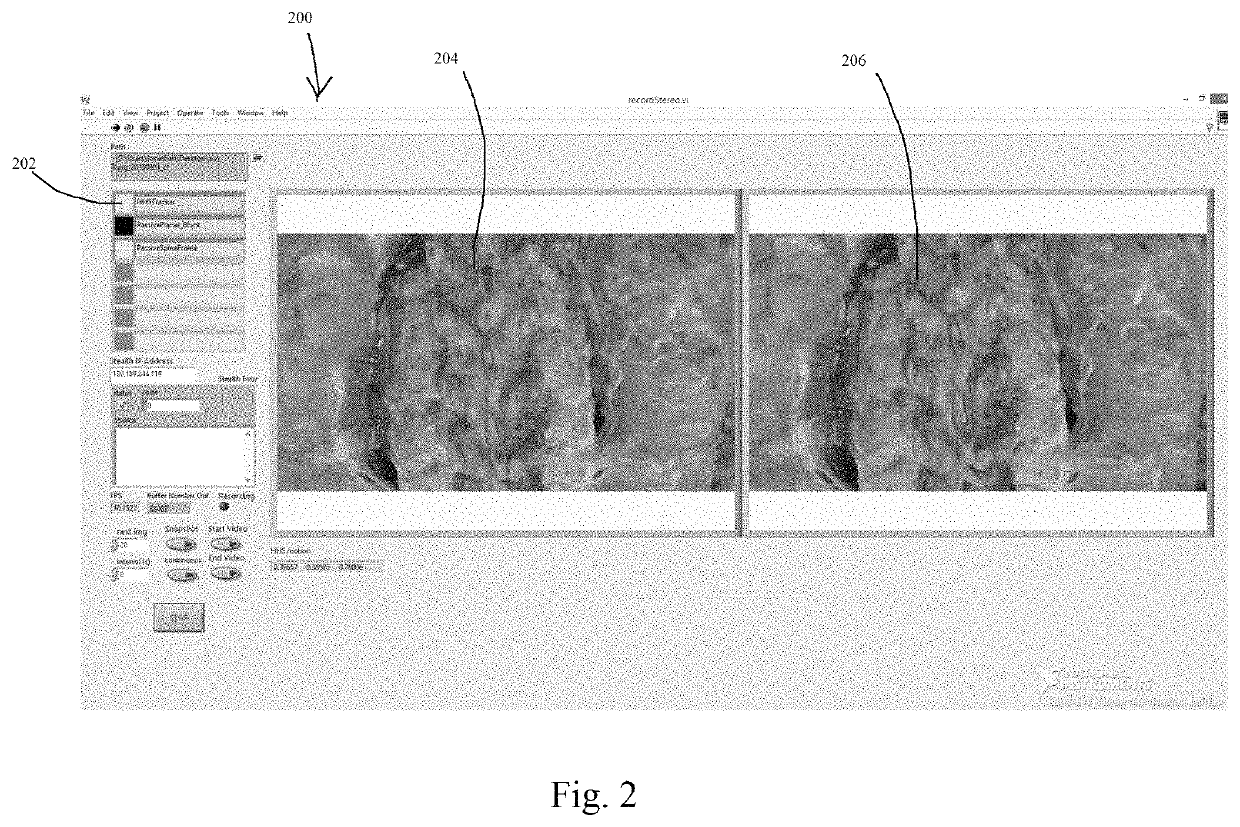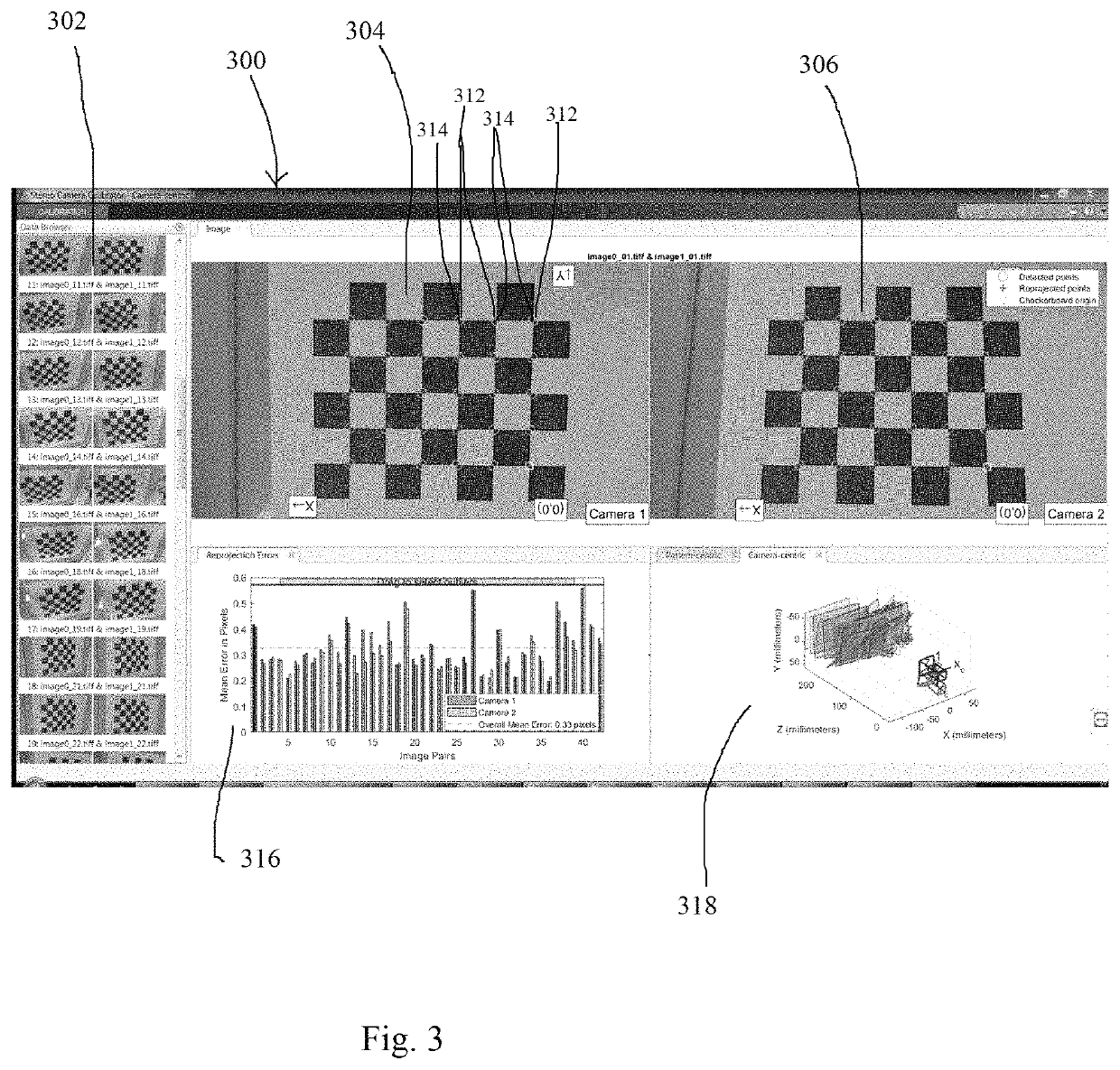Hand-held stereovision system for image updating in surgery
a stereovision system and surgery technology, applied in the field of hand-held devices, can solve the problems of over $100 billion direct medical costs, over 489,000 spinal fusion procedures, and the associated complication rate of instruments, so as to improve surgical outcomes and increase the size of the area being analyzed.
- Summary
- Abstract
- Description
- Claims
- Application Information
AI Technical Summary
Benefits of technology
Problems solved by technology
Method used
Image
Examples
Embodiment Construction
[0020]I. System Overview and Usage
[0021]A hand-held stereovision (HHS) system can be an efficient, accurate, and radiation-free imaging device to acquire intraoperative profiles of the exposed spine in prone position. The reconstructed intraoperative stereovision surfaces (iSV) can be registered with preoperative CT (pCT; supine position) in a nonrigid fashion to generate updated CT images (uCT) and correct for vertebral posture and alignment changes. Updated CT images can be uploaded to a commercial navigation system for surgical navigation.
[0022]FIG. 1A is a front view of an exemplary hand-held stereovision device, and FIG. 1B is a rear view of an exemplary hand-held stereovision device for use with the system and method herein, according to an illustrative embodiment. An HHS 100 can include a body 101 with a handle 102. In various embodiments, the body 101 with handle 102 can be 3D printed and can be made from polylactic acid (PLA). In various embodiments, the body 101 can be ada...
PUM
 Login to View More
Login to View More Abstract
Description
Claims
Application Information
 Login to View More
Login to View More - R&D
- Intellectual Property
- Life Sciences
- Materials
- Tech Scout
- Unparalleled Data Quality
- Higher Quality Content
- 60% Fewer Hallucinations
Browse by: Latest US Patents, China's latest patents, Technical Efficacy Thesaurus, Application Domain, Technology Topic, Popular Technical Reports.
© 2025 PatSnap. All rights reserved.Legal|Privacy policy|Modern Slavery Act Transparency Statement|Sitemap|About US| Contact US: help@patsnap.com



